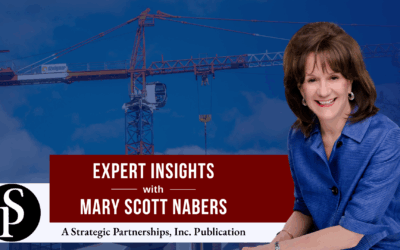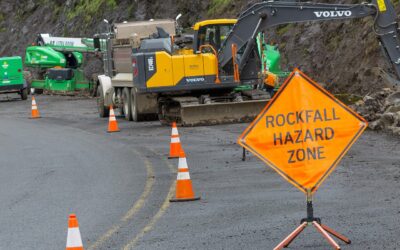At a time when project needs are so great throughout America, it is hard to understand why some cities and states have not endorsed public-private partnerships (P3s).
Billions of funding support is available for critically needed efforts, but many of the federal funding programs require some percentage of private sector investment, so the projects become somewhat of a public-private engagement. Is that why so many billions are still available with the funding programs scheduled to end in 2026? The federal government has also incentivized public-private partnerships with tax credits for investors. The amount of funding available through federal programs is historic and there is no assurance that the amount of funding that Congress made available previously will be reauthorized. In fact, the potential loss of this funding is a looming threat, with some saying reauthorization is doubtful.
City and county leaders in numerous states are grappling with budget issues. Public school districts are millions short on funding. Educational funding is needed for teacher salaries, facility repair, technology modernization and security upgrades. School districts also need new buses and equipment upgrades to lower operational costs. City officials cannot find adequate funding for public safety, water projects, technology modernization and public facility maintenance. These needs will not be met in 2025 because of budget shortfalls unless local public entities are visionary and aggressive in considering alternative types of delivery methods for innovative projects. The potential loss if these needs are not met is significant, underscoring the urgency of the situation.
However, many local government leaders are already reaping the benefits of public-private partnership initiatives. School officials, for instance, are launching P3 initiatives that not only support critical needs but also generate ongoing revenue for the district. By installing solar panels to cut power costs and constructing housing for teachers on campuses, they can return revenue to the district. Similarly, numerous city leaders are leveraging P3 projects to generate ongoing revenue through urban renewal, which in turn attracts more retail to downtown areas and increases tax revenue. Other cities and counties are launching projects that aim to attract more tourism, conventions, large tournaments, and entertainment seekers. Elected officials are also leading efforts to capture part of the billions available in federal funding for public asset recycling, renewable energy efforts, public safety expansions, and transit-oriented development. These types of projects not only address critical needs but also generate revenue for public entities when delivered through public-private partnerships.

Photo courtesy of tungnguyen0905 on Pixabay.
Projects related to infrastructure resilience can be supported by federal programs designed to combat the ravages of weather-related damages. Why aren’t government entities seeking funding support? Do some federal funding programs require private-sector investment, or should the state provide grant writing assistance? Funding is abundantly available to regions of the country with water purity issues, and some cities received grants to replace old lead poisoning pipelines… but much of the funding is still available for similar projects. These funding programs end in 2026, so now is the time to capture the grant funding. Support will not be available after 2026.
Throughout the country, regional banks, non-profit organizations, economic development groups, and other interested parties stand ready to invest in critically needed projects. Almost every large public project qualifies for some sort of infrastructure funding support. Elected leaders are often stopped from launching such partnership efforts because there is no enabling legislation from the state if that is required. Unfortunately, even if state approval is not required, the hesitation and reluctance from local leaders are related to a lack of public support from statewide leaders.
Some regions in America are greatly benefiting from billions of federal funding support. Other regions are being left out, and the question is, why?
Private sector investment in public projects is not new, and there’s no question about the need to fund critical infrastructure initiatives. But the government cannot carry the burden alone. All parties agree that public funding will never be completely adequate again.
Public-private partnerships have existed in America for more than one hundred years. Collaborative initiatives supported by private sector investors created the country’s infrastructure from the very beginning of the colonial period.
There are many reasons for public officials to launch collaborative initiatives with private sector partners, especially when revenue generation is needed. Revenue-generating projects include recycling old and non-revenue-producing public assets to tourist attractions, museums, or offices that will be leased for new revenue.
Numerous economic development organizations are partnering with private sector investors to renovate convention centers, revitalize urban centers, or provide new housing and retail near public transportation stations. Universities are constructing retirement complexes on their campuses for former students interested in living near them and participating in activities at their Alma Mata. The rental revenue goes directly to the university.
Cities and states with established public partnership offices that support and assist large collaborative initiatives benefit from financial support from federal programs. Many adjoining states are not benefitting as much. In regions that receive more federal support, citizens benefit from safer drinking water, less transportation congestion, more functional school districts, improved safety services and other upgrades that improve quality of life issues.
America’s economic vitality and global competitiveness depend on its infrastructure. Public-private partnerships are contributing greatly to this cause. Recently, the Partnership of Central America announced that $5.2 billion had been invested by private sector partners to improve infrastructure in North Central America. That amount of private sector capital has been invested only since May 2021. It represents the involvement of 50 companies that supported economic growth with agriculture, technology, telecommunications and transportation projects.
The City of Alexandria has supported public-private partnerships for years, and numerous projects now provide ongoing revenue to the city. Projects such as public parking garages, upgrades to the city courthouse, the Potomac Yard Fire Station, and affordable workforce housing are all examples of collaborative initiatives that received private sector capital. City officials have also launched partnerships with non-profits in public-public partnership initiatives.
The state of New Jersey has enabled legislation for school districts, colleges, and universities to enter into agreements with private sector partners. Other public jurisdictions with aggressive ongoing public-private partnership activities include Maryland, the District of Columbia and the states of Pennsylvania and Delaware. Virginia has been considered the leader in successfully launching collaborative initiatives with private sector investors for some time, but now there is competition for that designation.
The state of Puerto Rico established a Public Private Partnership Authority, somewhat like the Canadian Council for Public-Private Partnerships, which is considered one of the most successful P3 operations globally. Pennsylvania’s DOT’s leaders operate one of the most comprehensive P3 programs in the nation. It has delivered bridge safety upgrades, mass transit expansions, motorist safety and ongoing revenue to support future infrastructure and city service projects. Colorado and Maryland have launched all types of P3 projects that benefit the state, its citizens, and the U.S. economy.
A complete list of the cities, counties, and states leading the nation in collaborative initiatives would be very long. Because of that, the question remains—why are so many other regions of America not doing the same thing?







